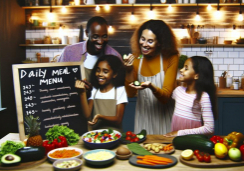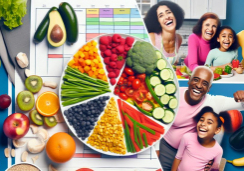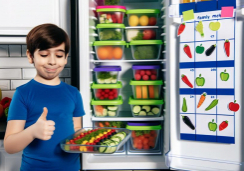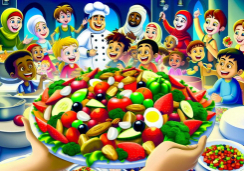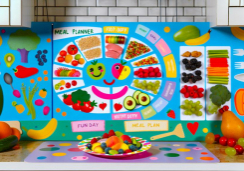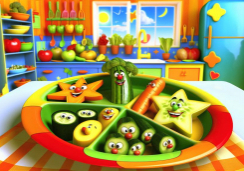Ultimate High-Protein Vegan Meal Planning Guide
Imagine you're sitting down to a dinner of smoky tempeh stir-fry, the tempeh's protein content rivaling that of any meat-based counterpart, yet entirely plant-based and bursting with flavor.
As a vegan, you know the importance of incorporating enough protein into your diet, but you might be wondering how to do so effectively and enjoyably. You're not alone; many share your concern and desire for a diverse, protein-rich diet without animal products.
In this guide, you'll find the building blocks for creating your own high-protein vegan meals that don't skimp on taste or nutrition. You'll learn how to combine legumes, grains, nuts, and seeds in ways that maximize their protein content and discover how to plan your meals for the week ahead, ensuring that you meet your dietary needs without the last-minute scramble.
So, let's explore how you can sustain your body and palate with a variety of satisfying vegan dishes that are as nourishing as they are delicious.
Understanding Protein Sources
When planning your vegan meals, it's crucial to know where your protein will come from, with options like beans, lentils, and tofu providing essential amino acids for your diet. Plant-based foods are varied in their protein content.
For example, a cup of cooked lentils offers about 18 grams of protein, while tofu can provide around 20 grams per cup. Edamame, young soybeans often found in pods, aren't only rich in protein but also offer a complete profile of amino acids necessary for optimal health.
As part of a vegan diet, it's important to include a diversity of protein sources to ensure you're getting all essential amino acids. A high-protein vegan meal plan might feature a range of foods, including quinoa, which contains around 8 grams of protein per cup.
Incorporate these vegan proteins into meals like freezer breakfast burritos or a kale Caesar salad with tofu croutons to keep your menu exciting and nutrient-rich.
Customizing your nutrition is easier when you understand the protein options available. Counting macros isn't just about hitting numbers—it's about choosing quality, minimally processed foods that support your health goals. With a variety of vegan protein sources at your disposal, you can create a balanced diet that fuels your body effectively.
Weekly Meal Structure
Crafting a weekly meal plan is a strategic approach to ensuring you consistently consume a variety of high-protein, nutrient-dense vegan foods. A well-thought-out meal plan ensures you're not only getting enough protein but also reaping the health benefits of a plant-based diet.
Begin by planning your meals for each day of the week, including breakfast, lunch, dinner, and snacks that incorporate a range of protein foods.
Creating a shopping list based on this plan will help you stock up on all the necessary ingredients. To optimize your time, wash and chop vegetables in advance. For protein on a vegan diet, pre-cook options like tofu, beans, or tempeh. These can be quickly added to any meal for a high protein vegan meal boost.
Additionally, cooking grains and legumes in bulk, such as quinoa, rice, or lentils, facilitates easy meal assembly throughout the week. This habit not only saves time but also encourages you to stick to your vegan eating goals.
Recipe Selection Tips
Having established your weekly meal structure, it's essential to select recipes that incorporate high-protein vegan ingredients to maintain both variety and nutritional balance in your diet. Prioritize vegan foods like beans, lentils, tofu, edamame, and spinach, which are all robust in protein and can form the foundation of your plant-based meals. When planning, use recipe analysis to ensure each meal contributes to your overall protein intake.
For meal prep, consider high-protein vegan staples that aren't only nutritious but also convenient. Freezer breakfast burritos can be loaded with tofu and black beans, chia pudding can serve as a high-protein vegan snack or dessert, and tofu salads are perfect for a quick lunch. Each of these options can be prepped in advance, making your vegan meal plan practical for busy schedules.
Customize your 7-day high-protein vegan meal plan to rotate through different protein sources. This approach not only prevents dietary boredom but also supports a broader spectrum of nutrients. Don't forget to include a mix of vegan snacks and whole grains, which are essential for a balanced vegan diet.
Lastly, tailor your meal plan's calorie content to meet your specific nutritional goals, ensuring your high-protein vegan diet aligns with your health and fitness objectives.
Meal Prep Strategies
To maximize both time and nutritional value, your meal prep strategy should start with a clear plan that outlines all meals and snacks for the upcoming week. Meal-Prep Your Week by first assessing your calorie needs to ensure you're getting enough energy and protein from your high-protein plant-based diet. Consider how many calories a day you aim to consume and distribute them across your meals and snacks.
For a balanced vegan breakfast, plan to include protein-rich options like tofu scrambles or protein-packed smoothies. When planning lunches and dinners, think about incorporating a variety of legumes, whole grains, and vegetables. Prep a Week's worth of meals by batch cooking recipes that meet your nutrition goals.
Don't forget to plan and add snacks that will help you meet your protein and calorie needs. Items like roasted chickpeas, nut butters, or a simple snack of sliced vegetables with a side of hummus are excellent choices. To boost the nutritional profile and satiety of any meal or snack, add 1 serving of guacamole for healthy fats and fiber.
Monitoring Nutritional Intake
While planning your high-protein vegan meals, it's crucial to monitor your daily protein intake to ensure it meets your personal health and fitness objectives. But, it's not just about protein; a balanced vegan diet also requires careful attention to other nutrients. Keep an eye on your intake of iron, calcium, and omega-3 fatty acids – all essential for maintaining good health.
Tracking your overall macronutrient intake is equally important. Break down your diet into calories, protein, carbohydrate, fiber, and fat to see where adjustments might be needed. Using a nutrition tracking app can simplify this analysis and help you stay on top of your meal plans.
Pay attention to how you feel, too. Your energy levels and general well-being are strong indicators of whether your dietary choices are working for you. If you're constantly feeling sluggish or run-down, it may be time to reevaluate your intake.
For personalized guidance, consider consulting with a dietitian experienced in nutritional analysis and meal plans. They can provide tailored advice to ensure your vegan diet isn't only high-protein but also nutritionally complete and aligned with your lifestyle.
Monitoring nutritional intake is a dynamic process, and with the right tools and expertise, you can thrive on your vegan journey.
Frequently Asked Questions
What Do Vegans Eat on a High Protein Day?
You'll eat tofu scrambles, seitan stir-fry, and protein-packed quinoa. Enjoy edamame snacks, lentil soups, chickpea salads, and tempeh tacos. Sprinkle nutritional yeast and hemp hearts for balanced, nutrient-rich meals.
How Can Vegans Get 140g of Protein a Day?
You'll reach 140g of protein by adding protein-rich legumes, seitan recipes, and tempeh cooking to your diet. Include edamame snacks, hemp seeds, and vegan protein shakes for a nutrient-packed boost.
What Is the Highest Form of Protein for Vegans?
You'll find the highest vegan protein in seitan, with its supremacy in protein content. Tempeh benefits, almond butter, and spirulina servings boost your intake, while quinoa dishes, chia pudding, and hemp hearts offer variety.
How to Get 150g Protein Vegan?
To hit 150g of protein, blend vegan protein shakes, sprinkle hemp seeds, and use nutritional yeast. Add tempeh to stir-fries, chickpeas to salads, and black beans in tacos. Enjoy lentil soups and seitan dishes.
Conclusion
Now you're equipped with the essentials for high-protein vegan success. Remember, diverse protein sources like beans, lentils, and tofu are key.
Stick to a structured weekly meal plan, and when prepping, keep it simple and flavorful.
Always monitor your nutrients to ensure balance.
Embrace this guide as your go-to, and you'll master the art of fueling your body with plant-powered protein.
Here's to your health and delicious, protein-rich vegan meals ahead!



